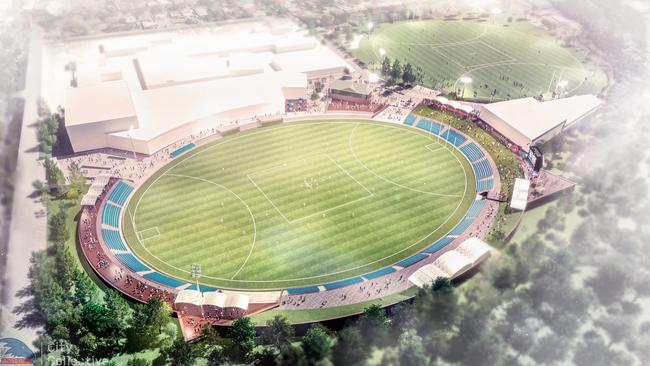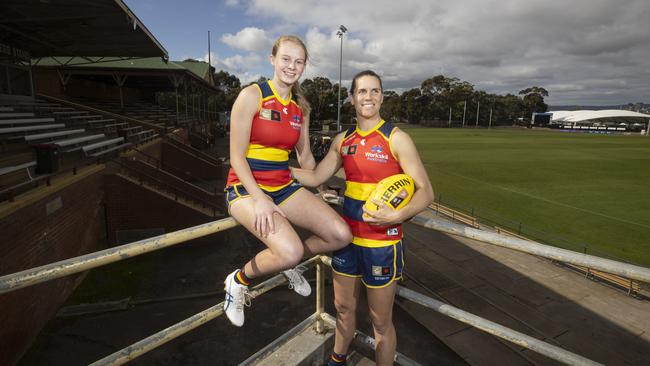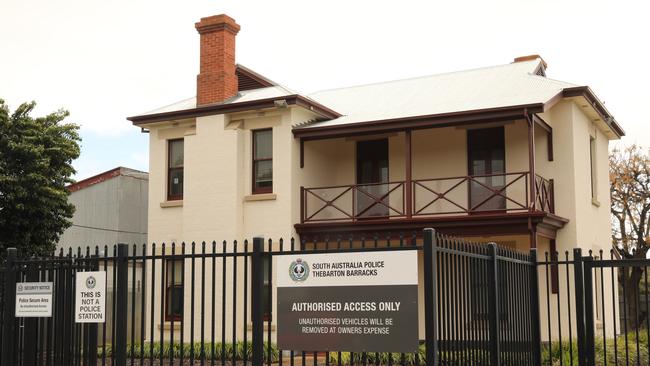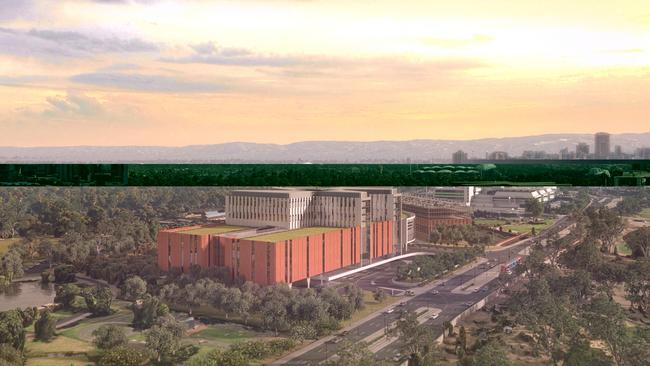Adelaide cancel culture hijacking Crows and Women’s and Children’s Hospital plans
Self-interested minorities cruelling plans over the new Crows HQ and Women’s and Children’s Hospital are hindering what’s in the best interest of the state, writes Paul Starick.
Opinion
Don't miss out on the headlines from Opinion. Followed categories will be added to My News.
An insular cancel culture is hijacking civic debate in Adelaide as self-interested minorities seek to shut down reasonable progress in the greater good of the state.
The two latest cases in point are the furore surrounding the heritage being sacrificed for the $3.2bn new Women’s and Children’s Hospital and residents’ concerns about the Adelaide Crows’ proposed $80m headquarters at the Thebarton Oval precinct.
Legitimate issues about these plans are being stoked by a disparate band of council election candidates, heritage advocates, parklands campaigners and general nimby naysayers. Their views are being amplified disproportionately and with insufficient scrutiny, in some cases, about the scale and relevance of the constituency they purport to represent.

Infrastructure and Transport Minister Tom Koutsantonis, whose electorate includes Thebarton Oval, belled the cat by declaring residents’ confusion over the Crows’ plans was being whipped up by council election candidates, not the West Torrens Council or the Adelaide Football Club. “In conflicts like this the first casualty is the truth … I think it’s (confusion) come from the fact that we’re in the middle of a council election campaign and there are a number of candidates running in the council election campaign, and this is a cracker issue for them,” he told ABC Radio on Friday morning.
Council members typically get elected with a relative handful of votes, so being visibly at the forefront of a hot local issue can be politically lucrative. As Mr Koutsantonis suggests, they don’t get much hotter than the relocation of the state’s most-supported sporting club.

Residents’ groups can give these aspiring local politicians a prominent platform from which to spout their views. For some years, residents’ groups have been afforded an almost-sacred weighting in civic debates by some commentators, elected officials and MPs. From this author’s experience at Messenger Newspapers in the early 1990s, some of these groups were effective community advocates. Others were political fronts or had a mere handful of shrill members.
Too often, these groups are afforded a prominent platform without their constituency being scrutinised, or even questioned, at the expense of the silent majority.
Predictably, a similar pattern was followed when Premier Peter Malinauskas on September 27 revealed the Thebarton barracks as the site for the new WCH. He positioned himself directly against Adelaide’s influential parklands and heritage lobbies, spearheaded by former Labor minister and Lord Mayoral candidate Jane Lomax-Smith and the respected SA Heritage Council chairman Keith Conlon.

There was a rush to stridently oppose the hospital site on heritage grounds – not scrutinise in detail the cost of up to $3.2bn for a 394-bed major public hospital.
Mr Conlon is right to advocate to preserve history, including the Thebarton barracks. But even he might regret sensationally describing the selection of the site for a new WCH as a “full-blown tragedy”.
Numerous tragedies unfold in a neonatal intensive care unit, particularly one in a WCH that is groaning under pressure because of the confines of its North Adelaide site.
Mr Conlon is, of course, entitled to his point of view and to deploy rhetoric to buttress his argument. But his out-of-character outburst speaks to what former federal Liberal leader and Advertiser columnist Alexander Downer in 2011 described as Adelaide’s “inertia of crippling conservatism”. Writing to strongly endorse a SACA members’ vote in favour of Adelaide Oval’s upgrade, Mr Downer argued this crippling conservatism, in relation to development, had turned the city into a museum.
“Nothing new should ever happen. Everything has to stay as it was,” he cited as the anti-development argument.

Adelaide Oval has become a symbol of triumph over the doomsayers. The $535m upgrade and subsequent $42m hotel development overcame savage opposition that, at times, was simply ludicrous – like the new eastern stands would spoil the view of the Adelaide Hills (essential when watching footy or cricket).
Opened officially in 2014, the Oval redevelopment has ignited hundreds of millions of dollars worth of development along the Torrens’ southern bank. – such as expansions of the Casino and Convention Centre.
The Oval upgrade was hugely controversial but a triumph for mainstream South Australians. This is the silent majority that is too often ignored in civic debate by partisan local politics and self-interest.
Declaration: The author is an Adelaide Football Club foundation member.




